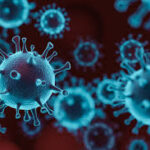The Virginia Department of Health has hired 2,000 COVID-19 contact tracers and investigators since May, but the virus has spread so rapidly that public health officials are conducting triage: focusing scarce resources on household members of people diagnosed within the past six days, people living in prisons and nursing homes, and individuals whose co-morbidities make them especially vulnerable to the disease.
State Health Commissioner Norman Oliver said in a statement that the change will allow Virginia to deploy resources where they will have the most impact, reports the Virginia Mercury.
“This means that the local health department may not be contacting everyone with COVID-19 infection or close contact to someone with COVID-19 infection,” Oliver wrote. “Instead, VDH urges people to take proactive responsibility to isolate at home if they are infected and to identify and notify their close contacts.”
I have always been skeptical that, except in special circumstances, contact tracing would prove of much assistance fighting a virus that spreads as easily and stealthily as COVID-19. By the time people are notified that they have been exposed, they likely already have the disease and have passed it on to others. Making the task even more difficult here in America, as opposed to countries with conformist cultures, many people refuse to cooperate. In New Jersey, reports CBSN Philly, an astonishing 74% of those contacted declined to answer question.
While trying to combat community spread seems like a losing proposition when the epidemic is raging unchecked, contact tracing might be useful in so-called “congregate” settings such as nursing homes, prisons, churches, meat-packing plants and other places of employment. First of all, the people in authority in those settings know who the patients, prisoners, church goers or employees are, they know how to reach them, and they are in a position to put corrective measures in place.
Outbreaks on congregate settings account for only 13.5% of all confirmed COVID cases in Virginia, so a focus out containing outbreaks will not halt the spread of the virus. But this is an area where the 2,000 contact tracers can be usefully employed and, at the very least, can slow the spread. The Northam administration is correct to concentrate on these settings.
Unfortunately, VDH has yet to release any data gathered from the contact-tracing effort. As I have opined in the past, the contact tracers could be valuable in a second way. By contacting and interviewing tens of thousands of people, they could develop insight into how and where the virus spreads, which then could be used to inform public health authorities and members of the public.
Does anyone at all catch the disease while exercising outdoors or dining outdoors at restaurants? Can we safely rule out those activities as risk factors? Does the disease spread among indoor diners? How often do people catch the virus in places of commerce and places of employment? Or in weddings and celebrations? Is the disease spreading primarily between friends and family members at home?
Who are the biggest spreaders? Do they fall within certain occupational categories? How worried should we be about housekeepers and tradesmen entering our houses? Are young people more likely to spread the disease? How carefully should older people guard against their children? How often does the virus spread inside schools? Are some socioeconomic or racial/ethnic groups more vulnerable, perhaps due to different living arrangements?
These are basic questions. It is shocking that we don’t have answers based on hard data. Members of the public could calibrate their behavior if they knew where the risks were greatest, and Governor Ralph Northam could calibrate his lockdown measures, which as far as I can tell, are rendered by his seat-of-the-pants judgment. We’re paying a lot of money to hire 2,000 contact tracers and investigators. Let’s get our money’s worth.


Leave a Reply
You must be logged in to post a comment.